#sap sucking slug
Explore tagged Tumblr posts
Text

Happy Marinetober!
Day 1: sap-ducking slug
Done w/ markers
#piratedllama art#art#drawing#drawtober#marinetober#sap sucking slug#sea bunny#marine life#marine animal#Inktober#markers#traditional art
15 notes
·
View notes
Note
Hiii!
I'm like a week new to Tumblr- I can't figure out how to sort through content well, so you've probably posted about this before
What do you know about sea slugs?? Like particularly interesting ones! I love them and wanna hear your description!!



Here are some of my past nudibranch posts: x x x
One of my favorite nudibranchs is the Sap-sucking sea slug (Cyerce elegans)!


The large leaf-looking parts are known as cerata and help the nudibranch "breathe". They can also be released to use as a distraction if the animal feels threatened!
The species has many color variations, from nearly transparent to red or brown! The color is dependent on the environment in which the species is found; these nudibranchs have coloration that matches the local algae that they eat. This helps them stay camouflaged while they're eating!
#marine biology#marine ecology#animals#science#biology#animal facts#wildlife#marine life#ocean#fun facts#nudibranchs#nudibranch#sea slug#sea slugs#sap sucking sea slug#cyerce elegans#ichthyology#invertebrates#sea creatures#sea animals#aquatic life#marine animals#sea life#ecology#cool animals
301 notes
·
View notes
Text
@gi-ie-ru
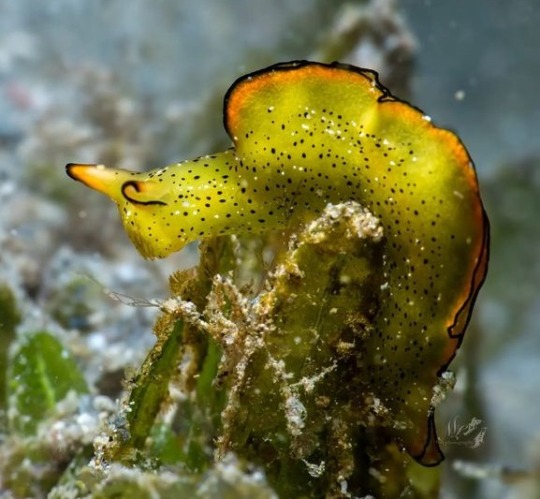
Ornate Leaf Slug (Elysia ornata), family Plakobranchidae, San Juan, Puerto Rico
photograph by Magali Marquez-Ramos
472 notes
·
View notes
Note
trick or treat!
You got a sap-sucking slug (Elysia viridis)!

424 notes
·
View notes
Note
WUAAAHHHH, i made something for u cookie :3


The slugss!!! Also some funfacts!!! Regarless of you know them or not...it was fun searching stuff for u fren :DDDDD
Here are also some funfacts about sea sheep:

They’re neither leaves nor sheep
Leaf sheep are actually a species of sea slug. A term used commonly to describe marine invertebrates, sea slugs resemble terrestrial slugs. However, they come in a wide variety of shapes and colors. Sea slugs are closely related to gastropods, such as sea snails and mollusks, with the main difference being that they don’t have shells. Along with leaf sheep, nudibranchs are another type of sea slug.
What looks like sheep’s ears are actually scent and taste receptors.
Leaf sheep have rhinophores on their heads that look like the ears of a sheep in perspective to their faces. They also resemble antennae on insects. The lead sheep’s rhinophores have fine hairs that sense chemicals in the water, enabling lead sheep and other sea slugs to find food sources.
Leaf sheep are about the size of a grain of rice.
Leaf sheep are only about a quarter of an inch, or a little over 5mm long. Yet, even at this size, their physical appearance is incredibly detailed. Some say they remind them of succulent plants such as aloe vera.
Their scientific name is a combination of Latin and Japanese.
Leaf sheep’s scientific name, Costasiella kuroshimae, is a combination or Latin and Japanese. Costasiella indicates the genus name of all sea slugs belonging to the sacoglossa group. Kuroshima, in Japan, is where they were first found. They are also referred to as “sap-sucking sea slugs.”
I won't make this ask longer then it is-
Hope this wasn't annoying for u, you don't gotta answer this
:3
GRIPPING YOU BY THE SHOULDERS AND SHAKING YOU VOILENTLY/vpos
BESTIE. BESTIE I LOVE THIS SM THANK YOU FOR DRAWING THESE LOVELIES AND GIVING ME INFO ABOUT THEM TOO!! I did not know about the naming or their size so you did teach me new stuff about my favourite silly!!!! <33
#framing this and putting it on my wall metaphorically#my precious...#asks#not my art#art#cool creatures#sea creatures#sea sheep#sea bunny
23 notes
·
View notes
Note
“maybe, in another life” kisses: knowing that this is the last time you’re going to kiss them, and making it count. pulling them in and then away. parting, your lips lingering for more. Noctis and one of the chocobros? (Your choice🙂)
Coming up!

The night had been filled with all the elements of life: sharing memories that had come and gone, both good and bad. Moments of silence and reflection on past deeds and regrets. Laughter and tears shed between four men who loved each other beyond words, having one last camp night before fate and the gods would shatter the bonds of brotherhood.
As the final embers in the campfire disappeared, Noctis felt his own spirit leave his eyes. Like the dying flames, he knew the night would set upon his own light. The final battle with Ardyn--the last of the Lucian kings--was around the corner: eight hours and counting.
He wanted to sleep, but what was the point when he'd soon have all eternity to rest? After confirming Ignis, Gladio, and Prompto were sound asleep, he left his chair and wandered off.
Noctis didn't stray too far from camp due to the daemons running around, but he gave himself enough distance to where he couldn't sense the presence of his friends. Sitting down on the edge of the cliff, he looked out into the desert of the Leide region. A warm wind coursed through his hair like fine fingers cradling every strand. He hoped the end would bring a similar peace. He even prayed the outcome would be the same for Ardyn. The crystal had shown the man's suffering to where Noctis didn't have it in him to hate his great uncle for his transgressions. Although, the thought of Lunafreya and her last words came and went through his mind.
"Soon, Luna…" He frowned, closing his eyes.
"Couldn't sleep either?"
Noctis jumped, turning his head as he saw Prompto's dark silhouette approach. He let out a breath of relief and chuckled. "I could've killed you just now."
"And after that wholesome speech you gave? That would've sucked!" Prompto laughed. He plopped himself next to Noctis, patting him on the shoulder and sighed.
"Is your mind traveling a million miles too?" Noctis asked.
"Yup!" Prompto nodded. "I keep thinking about the what-ifs."
"Dad would've said something along the lines of 'worry never robs tomorrow of its sorrow, it only saps today of its joy.'"
"Did he get that out of a fortune cookie?" Prompto snickered. He let out a yelp as Noctis playfully slugged him.
"Y'know what?" Noctis scoffed, grinning as he turned his head to face him. "I wouldn't be surprised if he did!"
In between laughs, Prompto frowned. "I miss him a lot."
Noctis nodded. "Me too."
"Like…how I'm going to miss you." Prompto somberly replied.
A heavy air sat between the two friends as they both allowed one another to sit with their feelings. A tension had been growing ever since they had set up camp with Gladio and Ignis, and both knew it was coming to a head.
"Do you remember that time we stayed up talking on the motel roof?" Prompto whispered, breaking the quiet.
"Can't forget it," Noctis murmured with a smile. "This feels similar, huh?"
"Yeah," Prompto nodded. He bit the inside of his bottom lip, looking toward his feet dangling off the cliffside and continued. "I have something…just as big that I want to share with you."
Noctis frowned, turning his attention fully to Prompto. "I'm listening."
Prompto closed his eyes, gathering up his courage as he tensed his shoulders. He managed to force himself to look Noctis in the eye, vowing he wouldn't be a coward and swallow his feelings back anymore.
"When Regis told the gang you were getting hitched, I was happy for you. Hell, I was ecstatic when you asked me to come along with you, Iggy, and Gladio to the wedding. At the same time, I felt…jealous. Not only was my best friend taking a huge step, and I probably wouldn't see him for a long time, but also…"
"Prompt…"
"Look, when we lost Luna, I was devastated. I mean no disrespect to you or her. I just…gods be damned I wanted to tell you that I…ever since high school, I…" The words wanted to fall from Prompto's lips, but alas, his cowardice took hold and prevented him from trespassing any further. He sniffled, feeling tears brimming at the corner of his eyes.
"I can't do it…even knowing what's going to happen, I can't tell you how much I--"
That's when he felt it.
Noctis's lips pressed to his.
Eos, fate, and destiny, it all faded away as their mouths met each other's with tenderness. Soft and gentle, but as they both realized the depth of their mutual feelings, the kiss deepened. Emotions that had been bottled up at long last finally saw the light of day.
Prompto's heart pounded in his chest as Noctis pulled away. Breathless with their foreheads resting against one another, he started to cry as his smile grew.
As Noctis retreated a little more, he let out a breath through his nose and somberly smiled as he cupped the side of Prompto's right cheek.
"Maybe in another life," Noctis murmured. "This could've worked."
"Yeah," Prompto breathed, nuzzling his face into his palm. "Whatever happens, at least we had this moment."
"Let's make it longer."
They sat together--hand in hand--looking out at the desert landscape. The future was uncertain, but for now, they had found clarity and comfort in each other, and that was enough.
If you like my work and feel generous, feel free to donate to my ko-fi account or my cash app account!
Cash App: $JayRex1463
#drabbles#noctis lucis caelum#prompto argentum#ffxv noctis#ffxv prompto#final fantasy xv#final fantasy xv noctis#final fantasy xv prompto#promptis#ff15#prompto x noctis#noctis x prompto#ff15 noctis#ff15 prompto#male pairing#male ship#final fantasy xv fandom
19 notes
·
View notes
Note
Hey,it’s the same person who wanted to check up on you to see if you were doing ok! Now,I’m not sure if you’ve gotten this question before,but I wanted to ask,are there any nudibranchs you know of that are harmless to humans?(Barring the sap-sucking sea slugs).
Hi!!
A good question! I'm sure many of you have heard about the Blue Sea Dragon nudibranch (Glaucus atlanticus) and how it can be a very bad experience for you if you pick it up, due to the nematocysts it keeps from its Cnidarian prey! However, most nudibranchs I can think of are less harmful to humans... it mainly is far worse for the slug in question! Sea slugs are very squishy and very delicate, and so touching them is generally a bad idea.
I also am based out of the west coast of North America, where I expect things to be generally less toxic than things in the tropics. But I haven't heard of too many harmful nudibranchs. A lot use toxins from their prey (coral, sponges, etc) to be a bad meal for their predators, but usually humans aren't a part of this picture!
So moral of the story, while I think many nudibranchs are harmless to humans, please don't go around touching (or especially eating!) any of them : )
#it is time for me to make one post and then disappear for months again!!!#just very busy with work : )#but hope everyone still likes all the old cool slug posts that just sit on this blog!
28 notes
·
View notes
Text
so i went to read about nudibranchs on wikipedia and immediately got distracted going down the link rabbit hole of "Sacoglossan" sea slugs (often confused with nudibranchs) and im just gonna c/p some of the wikipedia about them -
Sacoglossa, commonly known as the sacoglossans or the "solar-powered sea slugs", are a superorder of small sea slugs and sea snails, marine gastropod mollusks that belong to the clade Heterobranchia. Sacoglossans live by ingesting the cellular contents of algae, hence they are sometimes called "sap-sucking sea slugs".
...
Some sacoglossans simply digest the fluid which they suck from the algae, but in some other species, the slugs sequester and use within their own tissues living chloroplasts from the algae they eat, a very unusual phenomenon known as kleptoplasty, for the "stolen" plastids. This earns them the title of the "solar-powered sea slugs", and makes them unique among metazoan organisms, for otherwise kleptoplasty is known only among single-celled protists.
...
Also known as chloroplast symbiosis, kleptoplasty is the energy-providing mechanism that gives the Sacoglossan’s the nickname, “solar-powered sea slugs”, and E. crispata the name, “lettuce sea slug.” As algal food is being digested, the chloroplasts are absorbed into the cells lining the digestive tract and up into their parapodia. How many chloroplasts the slug sequesters and the length of retention depends on the individual species of slug. Chloroplast retention in E. crispata tends to last around 40 days. Given the variation in their diet, chloroplasts from different algal species have been found to be taken up into the same cells, functioning normally alongside the other.
tl;dr these sea slugs eat algae and store their chloroplasts for months to photosynthesize for them when food is scarce; sacoglossan sea slugs are the only multicellular organisms known to do this (if I understand correctly 😅)
..
ik everyone probably knows about them but im in love rn so anyways here's some pics!
(forgive that I didnt pay attention to the specific species when grabbing pics)
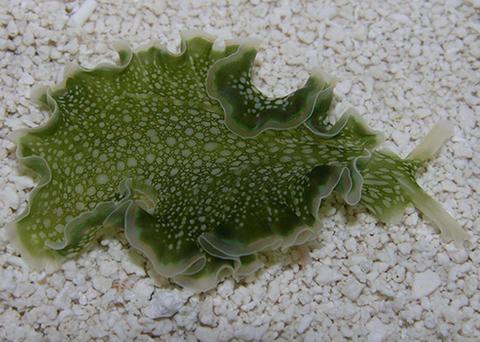

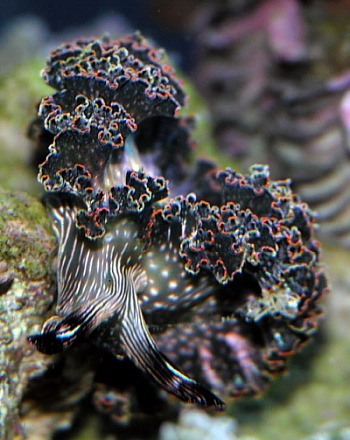




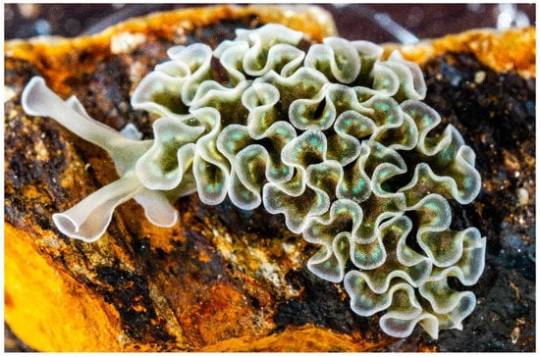
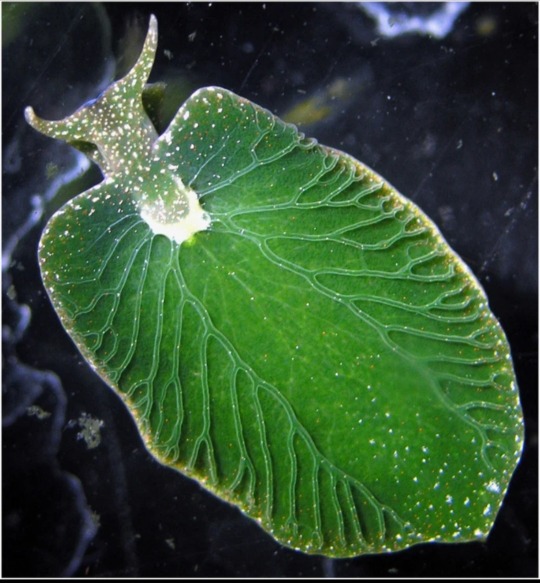
oh to be a sea slug eating sunlight in the ocean 🩵💚💙
#idk they just made me really happy#ik ive seen pics of lots of them but never rlly knew about the photosynthesis thing#which is AWESOME there's smth slightly above my head here about lateral gene transfer which is fascinating#there was smth special abt i think the lettuce sea slug in particular#bc multiple species of algae chloroplasts were working TOGETHER in them#idk im not smart or sober enuff to get into it#i just love these slugs#FINALLY LET ME POST IT GOD
15 notes
·
View notes
Note
slug fact? 🤲
There are certain species of Sap-sucking slugs (or sacoglossans) that produce solar power by eating corals which are rich in algae. Nudibranchs absorb the chloroplast of the algae and engage in photosynthesis.
4 notes
·
View notes
Text
sap sucking sea slug
'fairies dont exist' WRONG❗❗cyerce elegans



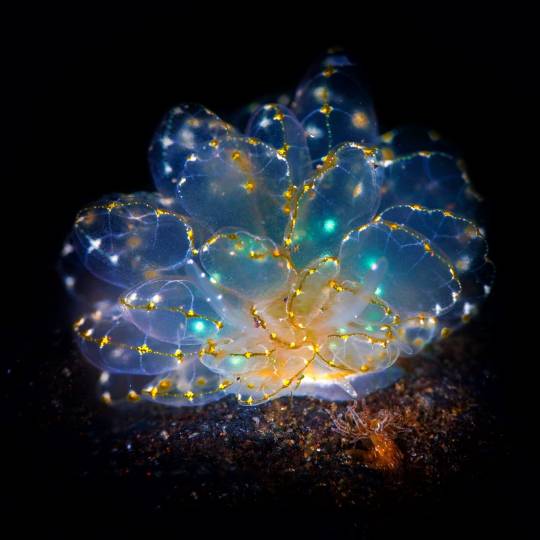
86K notes
·
View notes
Text
Transform Your Garden into a Haven with Effective Pest Control
Introduction
Gardens are often seen as tranquil havens, a place where you can escape the hustle and bustle of everyday life. However, the serenity of your garden can be disrupted by the presence of pests. In this article, we will explore how to transform your garden into a pest-free paradise using effective pest control methods. Say goodbye to pesky invaders and hello to a lush, thriving outdoor sanctuary.
Understanding Your Garden's Pest Problems
Identifying Common Garden Pests
Before you can effectively tackle pest control, it's crucial to identify the common culprits that can wreak havoc on your garden. These may include:
Aphids
Aphids are tiny, sap-sucking insects that can quickly infest your plants, causing wilting and yellowing of leaves.
Slugs and Snails
These slimy creatures can devour your tender seedlings and leaves overnight, leaving a trail of destruction.
Caterpillars
Caterpillars can munch through your garden greens in no time, leaving behind unsightly holes.
Assessing the Damage
Once you've identified potential pests, assess the damage they've caused to your garden. Look for signs of wilting, chewed leaves, or holes in your plants.
Natural Pest Control Methods
Beneficial Insects
Ladybugs (H2)
Introducing ladybugs to your garden can help control aphid populations as they feast on these tiny pests.
Praying Mantises
Praying mantises are voracious predators and can help keep caterpillar numbers in check.
Neem Oil
Neem Oil Spray
Neem oil is an effective organic pesticide that can deter a wide range of garden pests while being safe for beneficial insects.
Chemical-Free Pest Control
Companion Planting
Marigolds
Planting marigolds near your vegetables can deter aphids and nematodes with their strong scent.
Homemade Remedies
Garlic and Pepper Spray
Create a homemade garlic and pepper spray to repel a variety of garden pests naturally.
Maintaining Garden Hygiene
Regular Pruning
Trim Overgrown Plants
Overgrown plants can provide hiding spots for pests, so keep them well-pruned.
Cleaning Debris
Remove Garden Debris
Pests often hide in garden debris, so clean up fallen leaves and dead plants regularly.
Pest-Resistant Plants
Choose Resistant Varieties
Opt for plant varieties that are naturally resistant to common garden pests.
Fencing and Barriers
Install Physical Barriers
Use fencing and netting to keep larger pests, like rabbits and deer, out of your garden.
Conclusion
By implementing these effective pest control methods, you can transform your garden into a pest-free haven. Enjoy the beauty and serenity of your outdoor space without the worry of pesky invaders.
If you want to hire pest control experts in Rochester, NY then call "Town and Country Solutions" a reputed Rochester Pest Control, NY agency to exterminate pests thoroughly.
#syracuse termite control#exterminator rochester ny#termite control rochester#syracuse ant control#syracuse pest control#pest control rochester#cockroach exterminator#buffalo pest control#exterminators rochester ny#termite control syracuse#buffalo exterminators#Rochester Exterminators
0 notes
Text
What Is The Most Common Garden Pest?
Gardens are often susceptible to various pests that can damage plants and reduce yields. Some of the most common garden pests include: Aphids: These small, soft-bodied insects feed on plant sap and can cause wilting, stunted growth, and distorted leaves. They are typically found in clusters on the undersides of leaves. Slugs and Snails: These slimy creatures feed on leaves, stems, and fruits, leaving behind irregular holes and silvery slime trails. They are most active during damp and cool conditions. Whiteflies: These tiny, winged insects congregate on the undersides of leaves, sucking sap and causing yellowing, wilting, and stunted growth. They also excrete sticky honeydew, leading to the growth of black sooty mold. Cabbage Worms: These green caterpillars primarily target plants in the cabbage family, feeding on leaves and causing extensive damage. They are commonly found on cabbage, broccoli, and cauliflower plants. Tomato Hornworms: These large green caterpillars can devour tomato leaves and fruit, leaving behind substantial damage. They are usually well-camouflaged and can be challenging to spot. Squash Bugs: These flat, brownish bugs primarily target plants in the squash family, including zucchini and pumpkins. They suck sap from leaves and stems, causing wilting, yellowing, and eventual plant decline. Japanese Beetles: These metallic green and bronze beetles feed on leaves, flowers, and fruits of a wide range of plants. They can quickly skeletonize leaves and cause significant damage if left uncontrolled. Cutworms: These caterpillars hide in the soil and emerge at night to chew through the stems of young seedlings near the soil surface. They can sever or topple the plants, leading to their demise. Deer: These large herbivores can cause extensive damage to gardens by nibbling on plants, particularly tender shoots and foliage. Fencing or other deterrent methods may be necessary to protect plants from deer. Rodents: Mice, rats, and squirrels can damage plants by digging up seeds, chewing on stems, and stealing fruits. They can also disturb soil and create tunnels, which can affect plant health. It's important to identify and monitor these pests in your garden to take appropriate preventive and control measures. This can include using physical barriers, such as netting or row covers, applying organic insecticides, attracting beneficial insects, practicing crop rotation, and maintaining good garden hygiene. Read the full article
0 notes
Photo

Photo by Mickey Charteris | Info
Elysia pratensis is a species of sea slug found in the tropical west Atlantic. It is a relatively elongated species of Elysia ranging in color from green to a yellowish green with a pattern of pale longitudinal lines.
Elysia is a genus of sea slugs, marine gastropod mollusks in the family Plakobranchidae. These animals are colorful sea slugs, and they can superficially resemble nudibranchs, but are not very closely related to them. Rather, they are sacoglossans, commonly known as sap-sucking slugs.
#Elysia pratensis#sea slug#sea slugs#marine gastropod mollusk#plakobranchidae#sacoglossans#sap-sucking slugs#slug#slugs#seaslug#seaslugs#marine gastropod mollusks#marine biology
104 notes
·
View notes
Note
@confidently-regretful
(Sorry to be that guy but) the leaf sheep is not actually a nudibranch, but instead part of the closely related order sacoglossa. Nudibranches are carnivorous while sacoglossa are herbivorous and feed by sucking the sap out of microscopic algae. Many sacoglossa perform a process called kleptoplasty, where they reuse chloroplasts from the algal sap they feed on and implement them into their cells. Some notable examples are the bivalve snails in the family juliidae, the eastern emerald elysia (elysia chlorotica) and obviously the sea sheep. Another slug from the order elysia (elysia rufescens) reuses defensive molecules called kahalalides as well as chloroplasts. Most sacoglossans survive primarily through heterotrophic means (ingesting and digesting) and photosynthesise when food is scarce or unavailable as a last resort. Though research has shown leaf sheep can survive long periods of time with little to no food of heterotrophic or homotrophic (photosynthetic) origin. They store their chloroplasts in cerata, which are structures often found on nudibranches and regularly used for gas exchange or- in blue glaucus’ case- for attack and defence. They also have rhinophores protruding from their face, structures also commonly found on nudibranches, which are chemosensory organs (essentially face tongues) that appear ear like on nudibranches and sacoglossans alike.
To conclude: while leaf sheep are very similar to nudibranches, they belong to the sacoglossan family (which is good because sacoglossans are just as cool) and luckily are not the only animals to photosynthesise.
(I’m researching them for a highschool project and am so obsessed haha)




So not technically a fish but I absolutely love these lil fellas
They’re Nudibranch sea slugs and they all look so pretty!!!!!


Some notable exception are the Sea Bunny (left) which is just the most adorable thing I’ve ever seen
And the Leaf Sheep (right), which is the only animal known to be capable of photosynthesis!
i am SUCH a nudibranch fan oh my god. actual underwater fae creatures. beloved little freak animals. i want to eat them like cereal

200 notes
·
View notes
Note
Hey so,I’ve known about your blog for quite a long time, and I absolutely love the dedication you put into researching these little guys! (I’m a huge fan of sea slug/nudibranchs)! In fact, I’ve even used some—if not most of the species you’ve posted about as inspiration to produce my own original character designs. I’m a traditional concept artist by the way. Oh and by the way,of all the species you have posted, the sap sucking sea slugs—plus Bornella Anguilla are my favorites. I just wanted to check up on this blog to see if you were doing ok.
Hi!!
Messages like this mean so much to me!! It's so wonderful that people not only enjoy my slug posts, but wonder where I've gone when I drop off the face of the internet for a bit : ).
In short, I've been very very busy with real life things! I started this blog midway through highschool and just graduated from university this year, so it's been a long ride. But throughout my undergrad I've done a lot of marine biology research and courses (which included seeing my own share of wild nudibranchs!), focusing on marine invertebrates and seaweed! (And for the dedicated slug nerds, for an upper year marine invert class I did a whole paper on kleptoplasty in sap-sucking sea slugs; if anyone is interested in reading it let me know!!)
I've queued up a few posts for this week. Not sure how frequently I'll be able to post, but I'm hoping to be a little more active on this blog again now that I'm out of school!
(Also, I would absolutely love to see your sea-slug-inspired concept art, if you are alright with sharing it! I designed a few sea-slug based characters of my own back in high school, so I know just how fun they can be to reimagine)
37 notes
·
View notes
Note
Fun fact: elysia is a genus of sea slug! They are a Sacoglossa sea slug that look related to nudibranches, but are not! The thing about Sacoglossa specifically though is that they are also called “solar powered sea slugs” or “sap sucking sea slugs” meaning they most commonly suck the algae fluids and digest them for food! Other species of sacoglossa do it in other ways, but I believe the algae way is most common if im not mistaken!
that is VERY cool. do you think Elysia photosynthesizes
31 notes
·
View notes